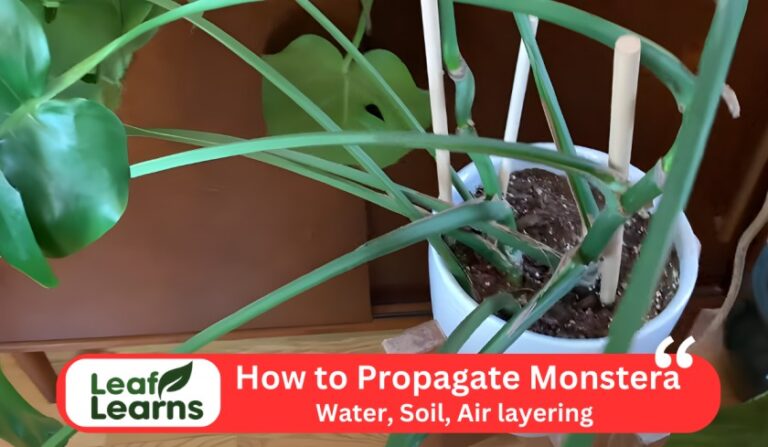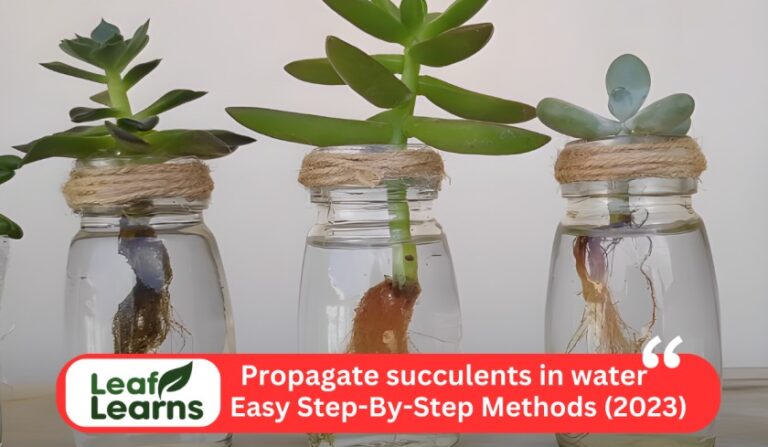How to propagate succulents: 5 Easy Methods (2023)
A different collection of plants called succulents are recognized for their unique looks and capacity to store water. In This article I will discussed about how to propagate succulents.They are well-liked choice for both indoor and outdoor gardens due to their great variety of sizes, colors, and forms.
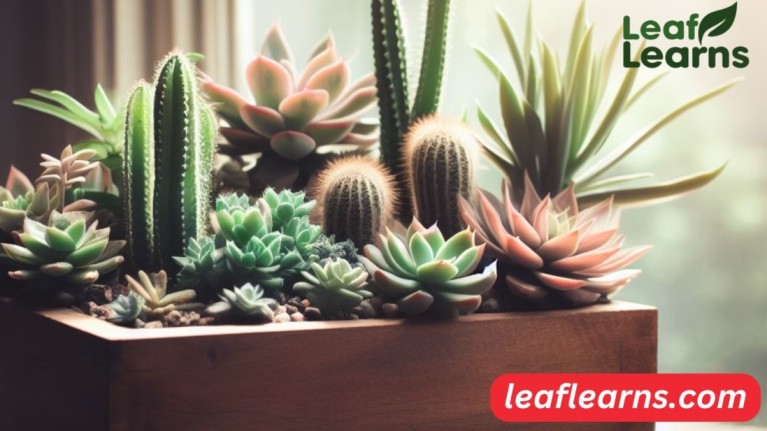
They are solid plants that require little care and can survive in dry environments thanks to the water storage capacity of their thick, fleshy leaves and stems.Propagating succulents is a amazing way to spread your succulent collection or share them with friends. So I will discuss the methods of propagating succulents in this article.
Contents
What Is Propagation?
Growing new succulent plants from older ones is a technique known as succulent propagation. With the help of this horticultural method, succulent collectors may expand their plant collection, give plants to others, or revive wilted or damaged specimens.
Choose a Healthy Parent Plant:
Take a mature and robust succulent as your starting plant. Successful progeny are more likely to be produced by healthy plants.
Select the Propagation Method:
There are several methods to propagate succulents, including:
Leave Cuttings:
Take a healthy leaf from the parent plant, callus it over (dry it), and then plant it in some soil that drains well.
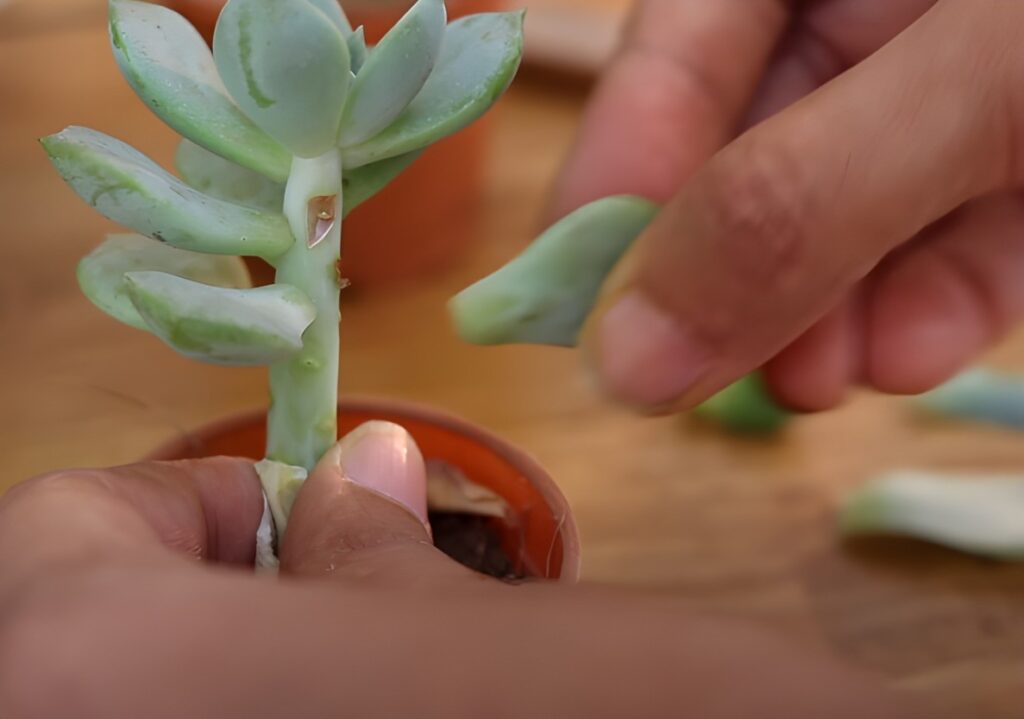
After that, I have written the complete process of Leave cutting in detail, and if you want to read then click on how to propagate succulents from leave cutting.
Stem Cuttings:
Before planting, cut a section of the stem (typically a few inches long) with a clean, sharp knife or pair of scissors.
After that, I have written the complete process of Stem cutting in detail, and if you want to read then click on how to propagate succulents from stem cutting.
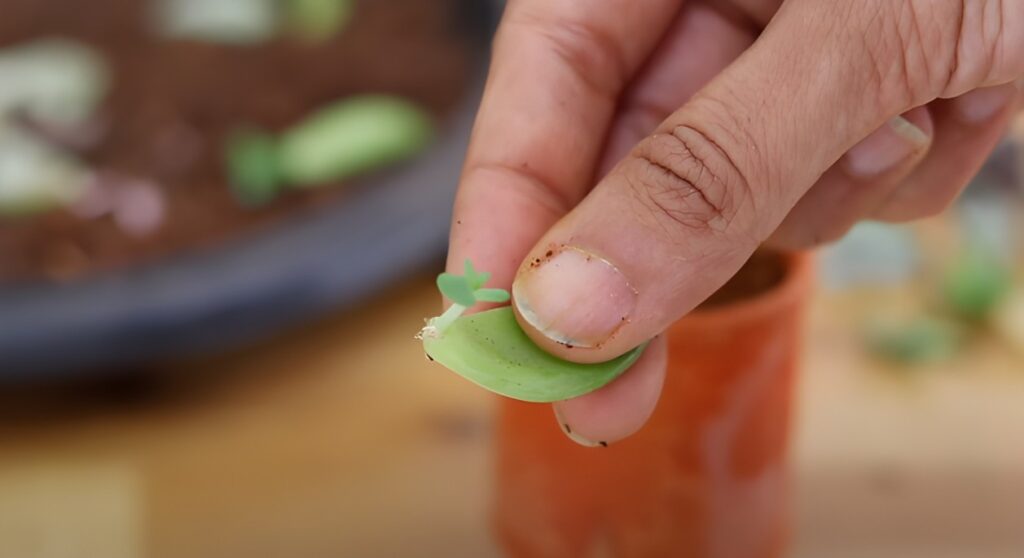
Offsets/Pups:
Propagation from Offsets:
Identify Offset: Around the base of the parent plant, many succulent species develop offsets, also known as pups or babies. Wait until the offset develops enough leaves on its own to be separated, which is usually when it does.
Prepare the Pot: Pick a little container with drained soil. You may make your own mix by mixing sand or perlite with standard potting soil to promote drainage, or you can choose a mix designed specifically for cacti or succulents.
Remove the Offset: The offset should be gently trimmed or twisted away from the parent plant. Make sure that the offset has part of the roots attached.
Let It Callus: To allow the sliced surface to callus, leave the separated offset in a dry, shady area for one or two days. In planting, this helps avoid rot.
Planting: The callused offset should be planted in the prepared pot, somewhat buried in the dirt. Water sparingly.
Care: Put the pot in direct, bright light and use a little water. Succulents tend to dry out between waterings, so avoid over watering.
Root Development: The offset will eventually form roots and grow into a new plant.
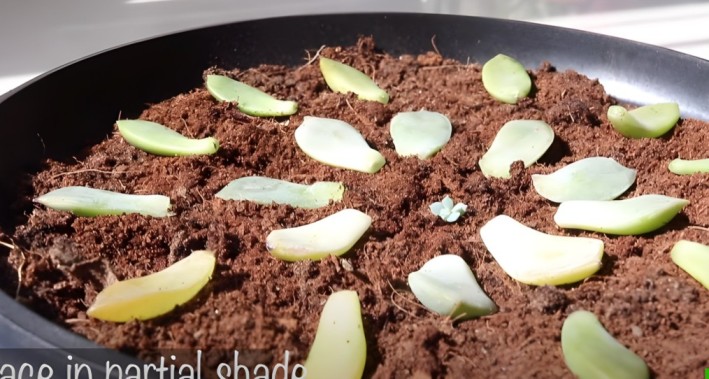
Propagation from Bulbs:
Identify Bulb: several succulents, including several varieties of Haworthia, grow corms or structures resembling bulbs. Wait until the bulb is fully developed and has begun to produce offsets.
Prepare the Pot: Use a small pot with well-draining soil, similar to the setup for offsets.
Separate the Bulb: GRemove the bulb from the parent plant carefully. You can use your fingers or a clean, sharp knife.
Planting: Plant the bulb in the pot, burying it slightly in the soil. Water lightly.
Care: Put the container in direct, strong sunshine and water it sparingly, letting the soil dry between applications.
Growth: The bulb will eventually start to grow roots and new offsets around its base.
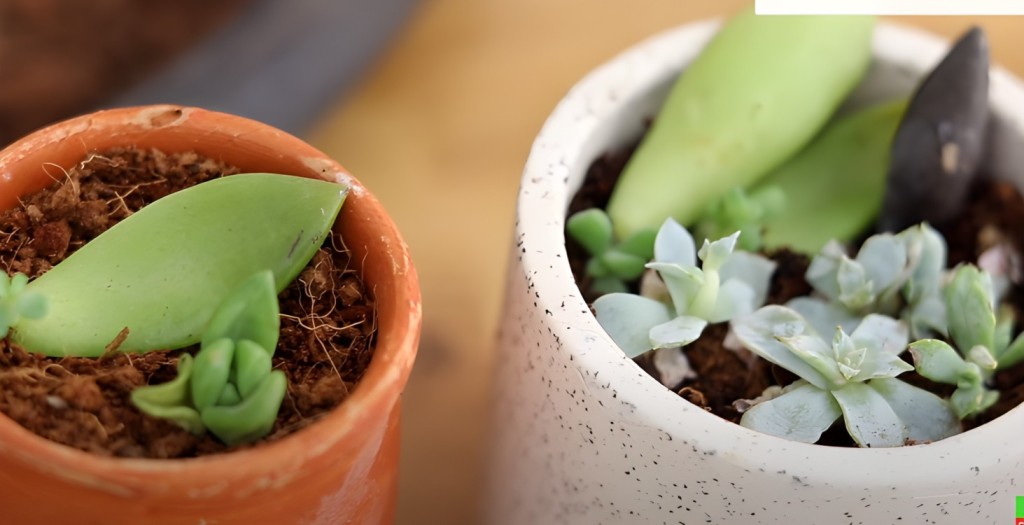
Division:
Materials you’ll need:
- Mature succulent plant to divide
- Clean, sharp scissors or pruning shears
- A small pot or container for the new succulent
- Well-draining succulent soil mix
- Optional: rooting hormone (for faster rooting)
Choose a Healthy Parent Plant:
- Choose an established succulent that you wish to multiply. Verify if the parent plant is sound and uninfected by pests or diseases.
Prepare Your Work Area:
- Create a tidy, well-lit workstation, ideally with a surface that is simple to clean in case of spills of soil.
Remove the Succulent from Its Pot:
- Remove the parent succulent carefully from the pot. You might need to tap the pot’s sides or use a blunt knife to dislodge the dirt if the succulent has deeply embedded roots.
Inspect the Root System:
- Examine the succulent’s root structure. Search for naturally occurring divisions or groups of stems with roots. To see the roots more clearly, you may also gently brush off extra soil.
Divide the Succulent:
- Cut or divide the branches or clusters of the parent plant using clean, sharp scissors or pruning shears. Make sure each division has a strong foundation of roots.
- If the clusters spontaneously split, you may also divide the succulent by gently tugging the pieces apart.
Let the Divisions Callus:
- To help the cut ends callus, place the divided succulent clusters in a dry, shady spot for a day or two. When you plant them, this procedure helps to avoid rot.
Plant the Divisions:
With a combination of well-draining succulent soil, fill a small pot or container.
The callused end of the division should be inserted into the hole you made in the soil with your finger or a stick. To lend support, gently compact the soil all the way around the divide.
Water Sparingly:
- Give the divisions a gentle watering after planting, taking care not to overwater. If their soil is left too damp, succulents are susceptible to rot. In between waterings, let the soil dry out.
Provide Adequate Light:
- Put the freshly planted divisions in a spot with bright, indirect light. Start by avoiding direct sunshine, which can harm freshly grown succulents. As they grow roots, gradually increase the light exposure.
Monitor and Care:
- Watch the divisions carefully, and make sure the soil is just barely dry between waterings. You may treat the young succulents like older succulents once they have developed roots and are exhibiting indications of development.
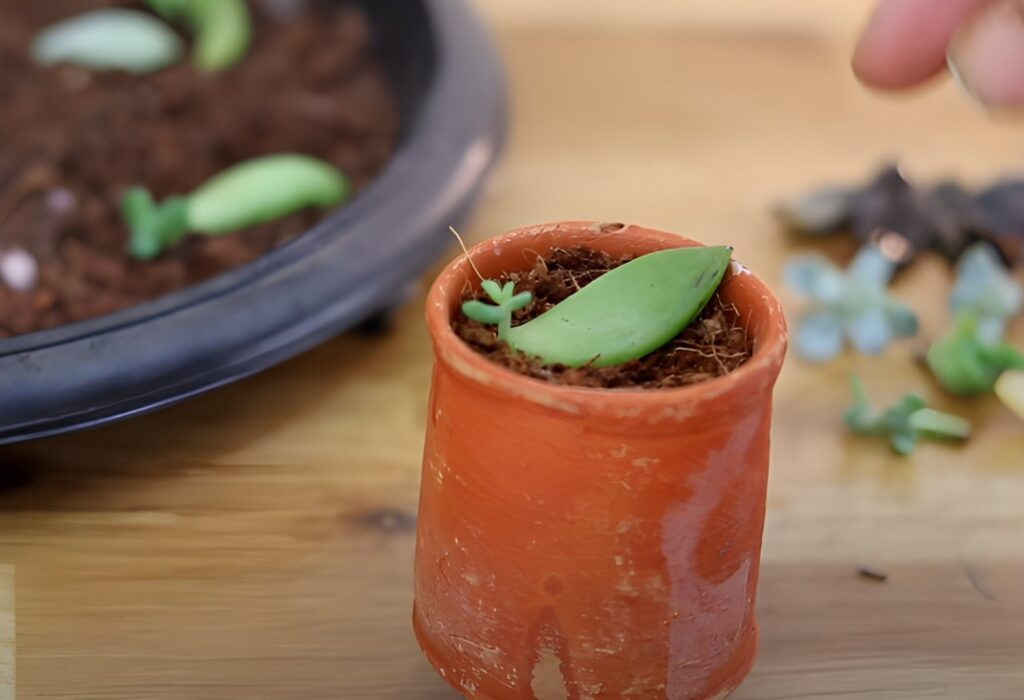
Through Seeds
Gather Supplies:
- Succulent seeds
- Seedling trays or pots
- Succulent soil mix
- Clear plastic cover or plastic wrap.
- Watering can or spray bottle
- Grow lights (optional)
Prepare the Soil:
- The succulent soil mixture should be poured into the seedling trays or pots. Make sure it’s just a little bit moist, not drenched.
Sow the Seeds:
- Over the top of the soil, evenly distribute the succulent seeds. They require sunshine to germinate, so do not bury them.
- To ensure proper germination, lightly push the seeds into the ground.
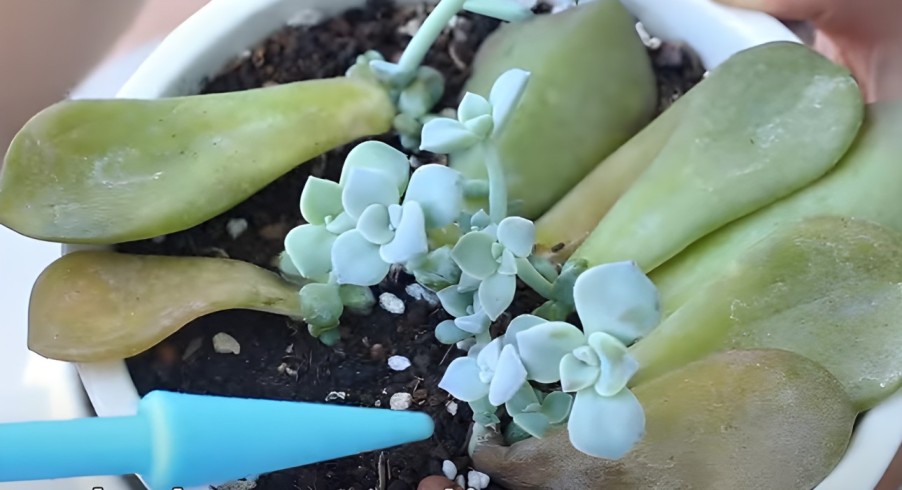
Cover and Create Humidity:
- To create a little greenhouse effect, cover the pots with a clear plastic cover or plastic wrap. This aids in moisture retention.
- If you’re using grow lights, set them up with enough spacing between them to produce indirect light. For their seeds to sprout, succulent plants require sunshine.
Maintain Moisture and Temperature:
- Always keep the soil wet, but not waterlogged. When the soil begins to dry out, water it with a spray bottle or a soft watering can.
- For optimum germination, maintain a temperature range of 70-75°F (21-24°C). If necessary, a heat mat can assist with temperature control.
Transplanting Seedlings:
- The seedlings can be transplanted into individual pots with well-draining soil once they are big enough to handle (usually a few weeks to a few months following germination).
- Use a tiny scoop or a stick to delicately remove the seedlings and their roots from the tray, being careful not to harm the delicate roots.
Caring for Young Succulents:
- The young succulents should be placed in an area with strong, indirect sunlight.
- Use little water, letting the soil dry out between applications.
- You may progressively expose the succulents to more sunshine as they ripen.
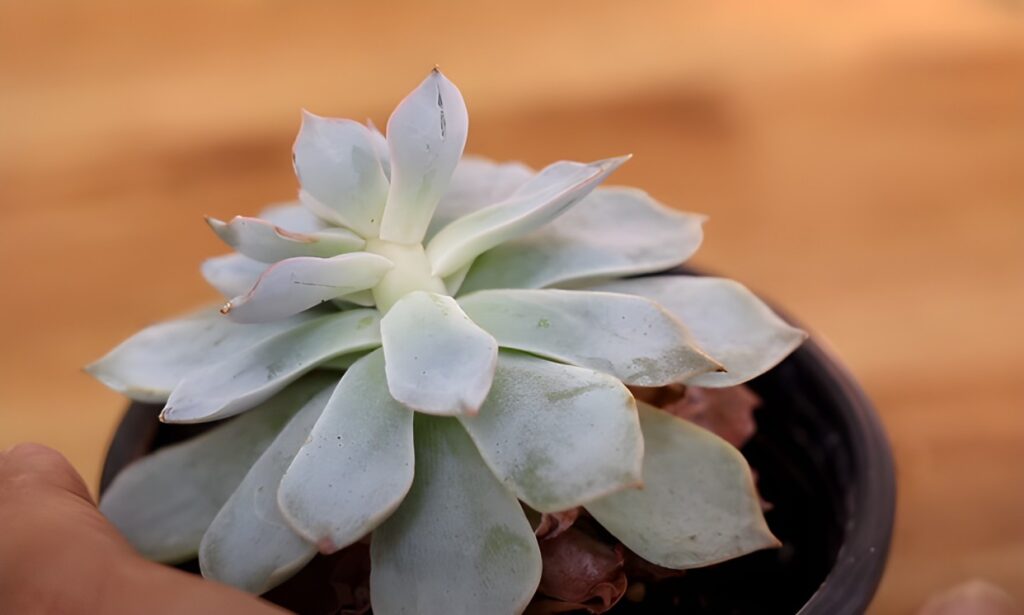
Propagate Succulents in Water
After that, I have written the complete process of propagation of succulents in water in detail, and if you want to read then click on how to Propagate Succulents in water.
Care for Succulents
Succulent maintenance gives these tough plants the environment they require to flourish. To avoid root rot, succulents need well-draining soil, therefore containers with drainage holes are crucial.
They should be placed in a bright area with indirect sunlight since direct sunlight can burn the leaves. Water gently and let the soil dry between applications. To maintain their health and vitality, regularly check them for pests and make sure there is adequate air circulation.
After that, I have written the complete caring process for succulents in detail, and if you want to read then click on how to care for succulents.
When to Propagate Succulents
Succulents should be multiplied when they are actively developing, which is often in the spring or early summer. This time frame guarantees ideal root and shoot growth conditions, increasing propagation success rates.
Can succulents thrive in many different climates?
Amazingly adaptable plants, and succulents may grow in a variety of settings, from dry deserts to temperate areas. They thrive in both dry and humid situations due to their capacity to retain water in their fleshy leaves.
Effective Succulent Propagation Techniques
When it comes to succulent care, knowing how to propagate aeonium, aloe, hens and chicks, and other succulents can be quite valuable. One effective method is to propagate succulents from stem cuttings. To start, carefully cut a healthy stem from the parent plant and let it dry for a day or two to allow the cut end to callus.
This step is crucial as it helps prevent rot when you propagate succulents in soil or water. For those tall succulents, such as the blue chalk or bear paw varieties, it’s essential to trim them down to a manageable size before propagation.
You can also air-propagate succulents by removing offsets or pups and allowing them to root in a well-draining medium. For optimal results, consider using a water bottle as a propagation vessel, making it easier to monitor growth. Adding rooting hormone to the mix can accelerate the process, whether you propagate succulents indoors or outdoors. These can be grow in both environment but in different conditions.
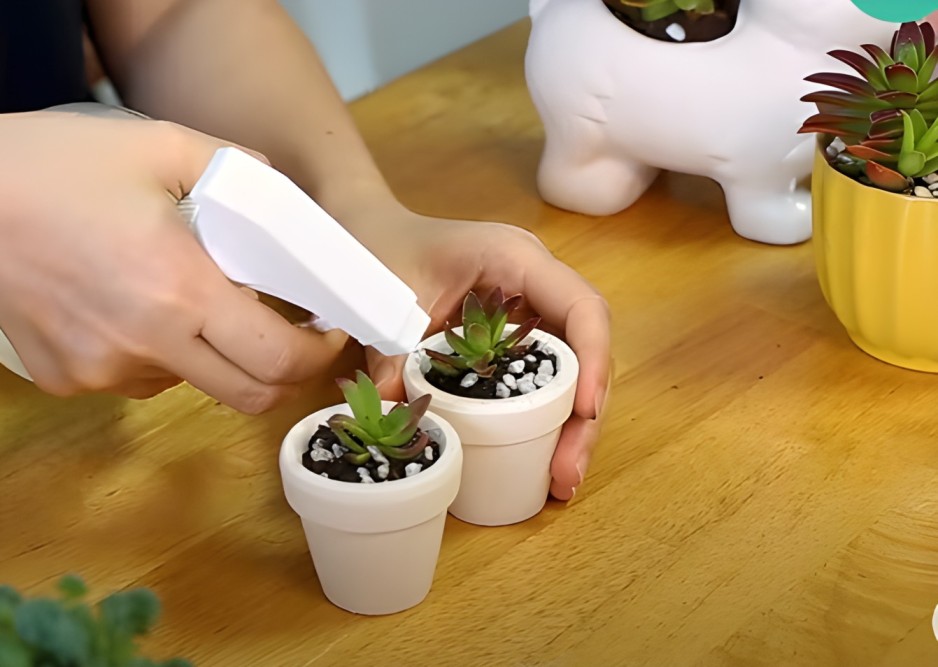
Essential Tips for General How to Propagate Succulents
General succulent care is equally important, and learning how to grow succulents, especially from cuttings, is a great place to start. Whether you’re growing succulents indoors or outdoors, proper care involves providing the right amount of light, well-draining soil, and minimal watering.
When you start succulent clippings or new plants from leaves, remember to be patient, as succulents don’t grow rapidly. To maintain a healthy succulent garden, regular pruning and trimming are necessary, and you can propagate the trimmings to expand your collection.
By mastering the art of propagating succulents, you can grow a thriving succulent garden and enjoy the beauty of these unique plants in various shapes and colors.
FAQs
What is the purpose of allowing succulent leaf cuttings to callous before planting?
By forming a barrier at the cut end, callousing leaf cuttings inhibits decay.
How often should you water succulent leaf or stem cuttings during propagation?
To prevent rot, water in moderation, keeping the soil continually wet but not saturated.
What is the typical timeframe for succulent leaf cuttings to develop roots and new growth?
For leaf cuttings to develop into roots and young plants, it may take several weeks to many months.
Can you propagate succulents from seeds, and what is a key consideration when growing succulents from seeds?
Yes, It is possible to produce succulents from seeds, but it takes persistence and continuous soil moisture throughout seedling establishment.





